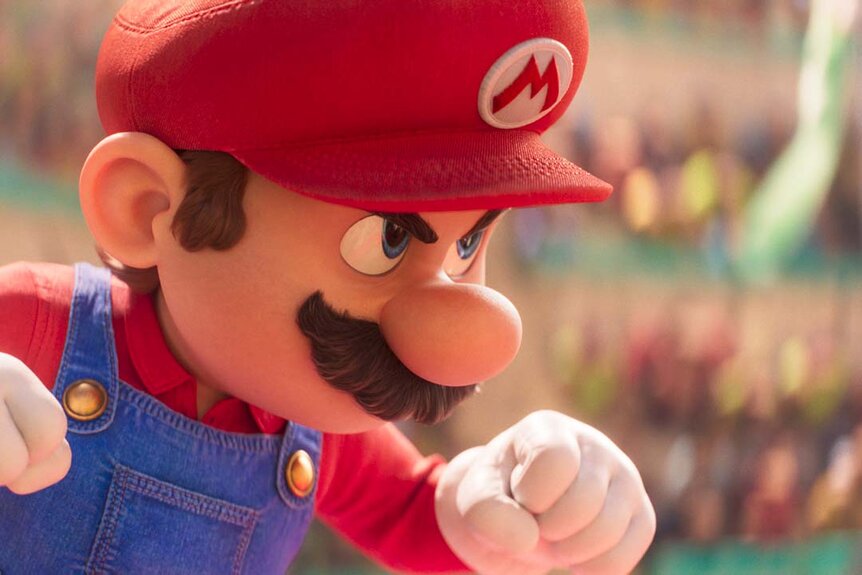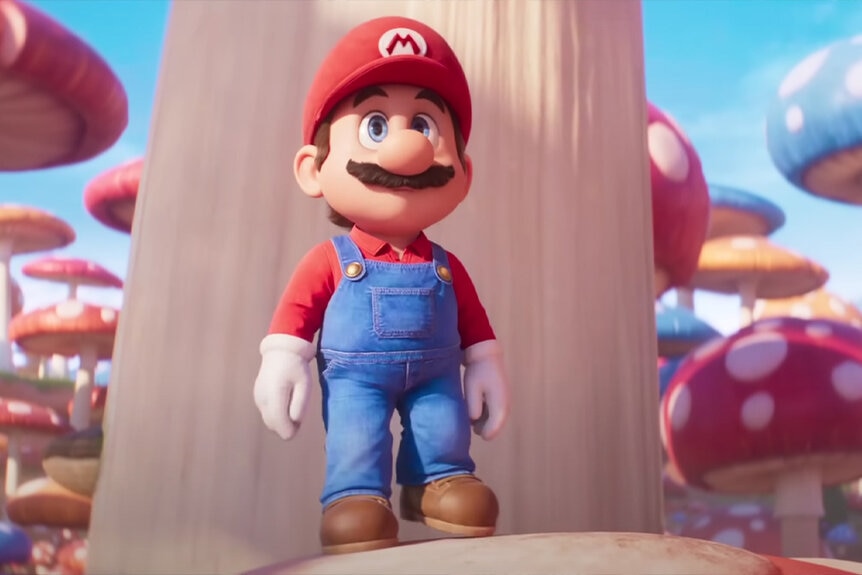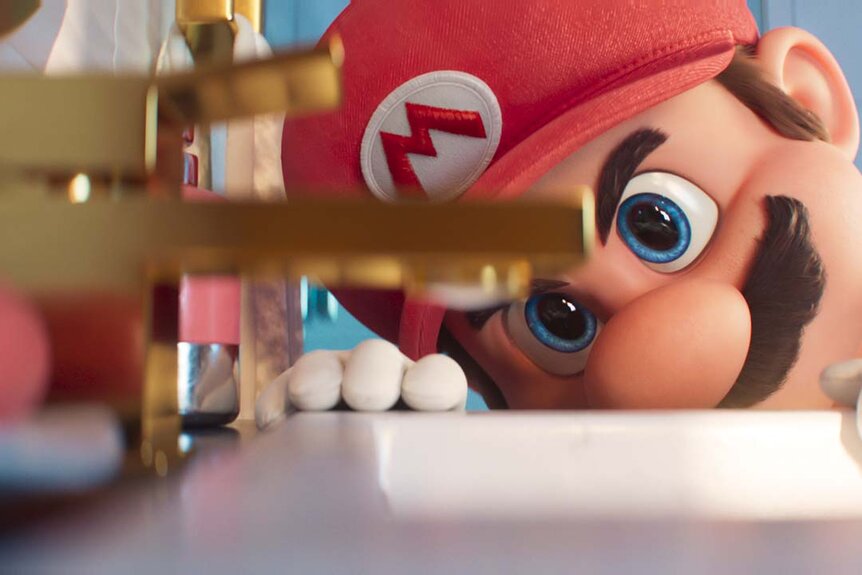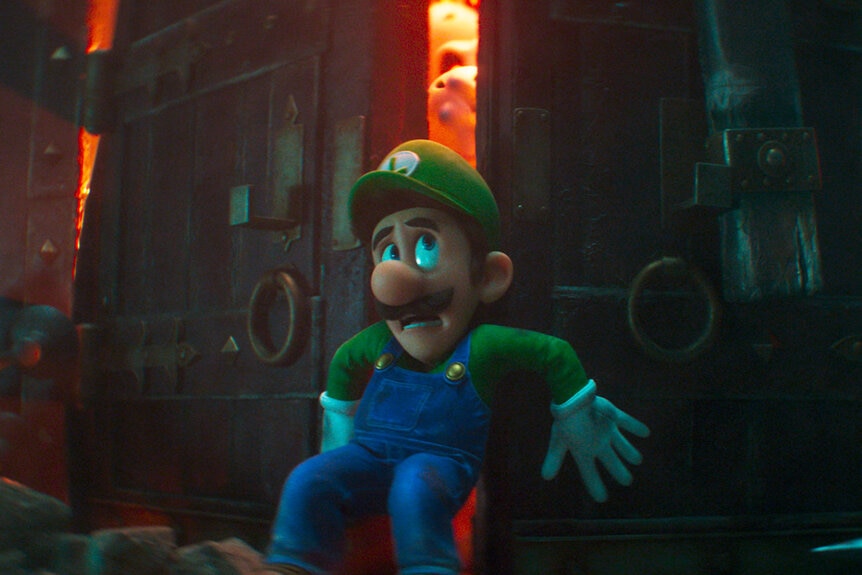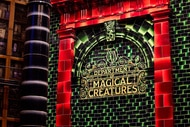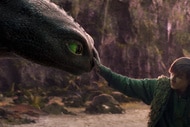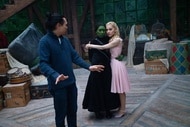Create a free profile to get unlimited access to exclusive videos, sweepstakes, and more!
9 things you (probably) didn’t know about Mario & Luigi’s video game origins
Behind Nintendo’s mustachioed mascot, there’s a whole super-galaxy of hidden Mario history.
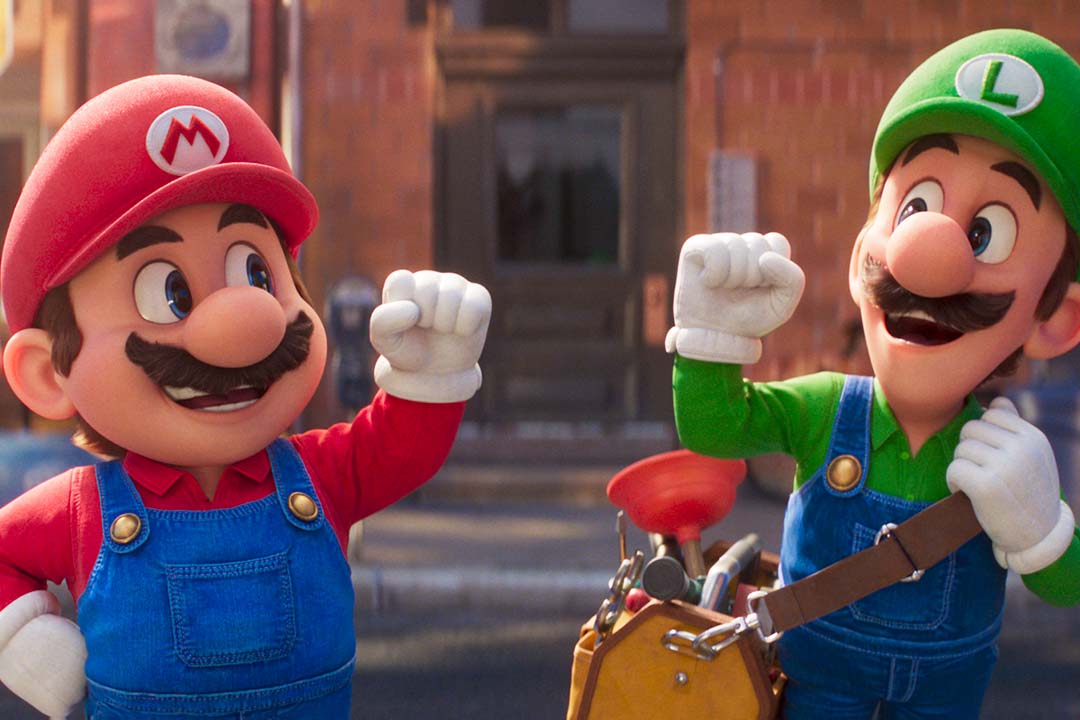
For a pair of super bros who’re synonymous with video game greatness, Mario and his ‘fraidy-cat fraternal twin Luigi have a super-mysterious side. Even after decades of boppin’ and hoppin’ their way to mascot status not only for Nintendo, but the entire games universe as a whole, they tend to never talk about their pasts — or pretty much anything else, for that matter.
Sure, they have some of the most distinctive voices in all of entertainment. But for the majority of their extended Nintendo playtime, Mario and Luigi have mostly remained content to confine their iconic sounds to “It’s me!” exclamations and the occasional punctuated shout (or, in Luigi’s cowardly case, a terrified whimper). That all changes on April 5, when a full voice cast led by Chris Pratt (Mario) and Charlie Day (Luigi) shed a ton of new narrative light on their Mushroom Kingdom stomping grounds as The Super Mario Bros. Movie finally presses “play” in theaters.
RELATED: Before 'The Super Mario Bros. Movie,' replay the 10 greatest Mario games ever made
Before heading out to hunt down Bowser (voiced by Jack Black) on the big screen, it might be nice to know a little more about our enigmatic heroes and the video game origins that powered them up to international megastar status. So strap on your Wing Cap and get ready to fly, as we soar through some of the best-hidden high points in Super Mario Bros.’ sometimes-clouded history.
Why are they Italian?
Cartoonishly cute with an oversized mustache and adorably plucky accent, Mario first sprang to life from the boundless imagination of the legendary Shigeru Miyamoto, the Nintendo designing mind behind not only the Mario franchise but Big ’N’ greats like The Legend of Zelda, Nintendogs, Star Fox, and Pikmin. Miyamoto has said he was captivated by Italian comics as a child, explaining in a 2015 NPR interview that lending Mario some international flair helped distinguish the character early — especially as Nintendo sought to extend its games’ appeal beyond the company’s native borders in Japan.
“[I]f you think about it, the big nose and the mustache is not a facial feature that's characteristic of Japanese people,” the creative icon confessed. “And so I think that my connection to those Italian comics — probably I drew on that inspiration when we first drew the character.”
Mario wasn’t always known as ‘Mario’
If you’re old enough to remember his world debut in the 1981 original arcade version of Donkey Kong, this one might seem obvious. But for everyone else, it may come as a surprise to know that Mario made his very first jump under a far more generic game name.
Though his trademark facial hair and red-and-blue outfit were there from the start, it wasn’t until 1983’s Mario Bros. — the game that also introduced Luigi to the mix — that our hero actually went by the name “Mario.” Until then, fans knew him only by his lowly Donkey Kong designation of “Jumpman.” Want another fun bonus fact? Princess Peach had a different Donkey Kong, name, too: Jumpman’s damsel in distress was simply known in the 1981 arcade original as “Pauline.”
Mario wasn’t always a plumber, either
Diving again into Mario’s Donkey Kong origins, our plucky plumber hero’s day job wasn’t quite as specific, back then, as fixing pipes. Miyamoto originally envisioned the character simply as a carpenter — because, as he told NPR, the avatar soon to be known as Mario “was working on a building” when he ascended that first steel structure in Donkey Kong.
When Mario Bros. introduced pipes to the platforming mix in 1983, “we thought, in this game, it would make sense that Mario would be a plumber because of all the pipes,” Miyamoto added. “And so that's where the plumber came from. But my vision of Mario has always been that he's sort of representative of everyone. He's kind of a blue-collar hero.”
Luigi’s actually the younger brother… but they’re still twins
Wearing plenty of different role-playing hats over dozens of games that span decades of platforms, the finer points of Mario and Luigi lore can definitely get a bit murky. And though we’ve never seen their birth certificates, Nintendo has at least clarified two facts about the duo’s enigmatic early lives. As reported by Ars Technica, Miyamoto confirmed in 2016 that Mario is, in fact, Luigi’s elder, with Nintendo later weighing in to further clarify that their age difference is still super-slight: All the way back in 1995, the setup to Super Mario World 2: Yoshi's Island had revealed — albeit rather under the radar — that our heroes in overalls are actually twins.
Mario was named after… a guy from Seattle?!
There’s something delightfully authentic about the way the Mario franchise began, whether it’s Miyamoto’s own early-life admiration for comics and adventure or the strange-but-true story of how Nintendo settled on our hero’s now-iconic name. It turns out (via IGN) that the name “Mario” was inspired by real-life American businessman Mario Segale, who reportedly owned the Washington warehouse where Nintendo initially set up its 1980s American operations.
“When we sent the game to the U.S. to sell the Donkey Kong arcade games in America, in the warehouse that the Nintendo was operating out of in America at that time, there was somebody related to that warehouse whose name was Mario,” Miyamoto explained to NPR. “And the staff at Nintendo in America said that the character looked like the individual named Mario. So they started calling the character Mario, and when I heard that I said 'Oh, Mario's a great name — let's use that.’”
Luigi is the better athlete… but he’s kind of a glass cannon
Thank the Super Smash Bros. game series — and particularly 2008’s Super Smash Bros. Brawl — for first injecting some character nuance that helps fans distinguish Mario and Luigi’s fighting styles. Choosing Mario as your fighter gets you a tank-y brawler who can hang in the fray a little longer, but it’s Luigi who comes with the better set of moves. Never mind his well-earned reputation as a guy who runs from conflict: Luigi can jump higher, run faster, and even swim farther than his older, shorter sibling. Just don’t expect him to take too much abuse, because it turns out Luigi isn’t really built for brutal melee battle…after all, that’s more his brother’s kind of game.
Mario’s relationship with Donkey Kong is… complicated
Back in Mario’s earliest Jumpman days, Donkey Kong wasn’t the chummy pal with the fun party necktie he would later morph into as the star of his own game series. Nope, in the very beginning, he was an angry ape tossing barrels down at his determined enemy, nabbing princesses and generally playing much the same antagonist’s role players have since come to associate with Bowser.
What happened? Well, the short version’s simple: The Mario franchise blew up. Nintendo soon recognized Donkey Kong’s character appeal as more than just a jealous gorilla, handing him the keys to his own Mario-adjacent platform title with 1994’s Donkey Kong Country. Suddenly, the big lunk found himself playing the role of the good guy, fending off a slew of new enemies fronted by the nefarious King R. Rool, and in turn, Donkey Kong’s new star status propelled him toward a friendlier, more cooperative place in Mario’s ever-expanding orbit of allies. Nintendo still merrily switches things up now and then, though, with good-natured standoffs between the two gaming titans a perennial hallmark of the Mario Kart and Super Smash Bros. series.
Luigi’s go-to weapon has a certain ‘Ghostbusters’ vibe
The story of Mario and Luigi’s origins is really more a story of evolution, as Nintendo introduced new features and refined the characters’ traits over time. In 2001, the company fully committed to Luigi’s now-canonical persona as a hilariously nervous wreck, playing up his famous fear of ghosts in the GameCube launch title Luigi’s Mansion.
As the name suggests, Luigi’s Mansion is haunted too the hilt, overrun with spectral scares meant to frighten our green-clad sidekick out of his timid little wits. Thankfully, the game also equipped Luigi with a handy little ghost-busting gadget: The Poltergust 3000, a portable ghost vacuum cleaner that sucks up the spooks and stores them safely away in Luigi’s handy backpack (Think of it as a less-supercharged version of Ghostbusters’ Proton Packs and you’ll be in the basic ball park.) Though Luigi can still get by just fine without his trusty specter-sweeper strapped to his back, the gadget has become a big part of his video game identity: Luigi’s Mansion went on to spawn two Luigi-themed sequels, each featuring powered-up versions of the original Poltergust — you know, to keep him from totally fleeing in fear.
Recognize that voice? Just wait for the movie
For nearly 30 years, one voice actor has been behind every “ooh” and “oof” players have heard out of Mario and his extended Mushroom Kingdom family. From his little-heard 1994 debut in educational title Mario Teaches Typing (yes, that really was a game) all the way to the present day, actor Charles Martinet has served as the voice not only of the Mario and Luigi, but also their “baby” variants as well as bizarro alter-egos Wario and Waluigi.
Martinet gave Retro Gamer a hilarious account in 2022 of how he first fell into his Mario role, explaining how he came up with Mario’s vocal persona on the spot after being recruited to audition for the then-novel concept of voicing a computer-animated avatar. His instructions were pretty confusing for the time: “You’re an Italian plumber from Brooklyn named Mario, for this company Nintendo, it's a video game character. We're going to create a real-time animation system so you will talk as this character, and the audience will see the character,” Martinet explained of his earliest instructions.
Fans today have heard Martinet in pretty much every Nintendo game since whenever Mario’s been in the picture, as well as a slew of Star Wars games and in The Elder Scrolls V: Skyrim as the sonorous voice of the dragon Paarthurnax. To commemorate Martinet’s historically crucial role in shaping Mario’s memorable sound, Illumination and Universal Pictures hint that fans should be on the lookout in The Super Mario Bros. Movie for Martinet’s unmistakable voice to emerge in a still-secret cameo role.
Button those overalls and strap on your cap: The Super Mario Bros. Movie bounds into theaters everywhere beginning April 5. Get the jump on Bowser early by grabbing tickets here.
